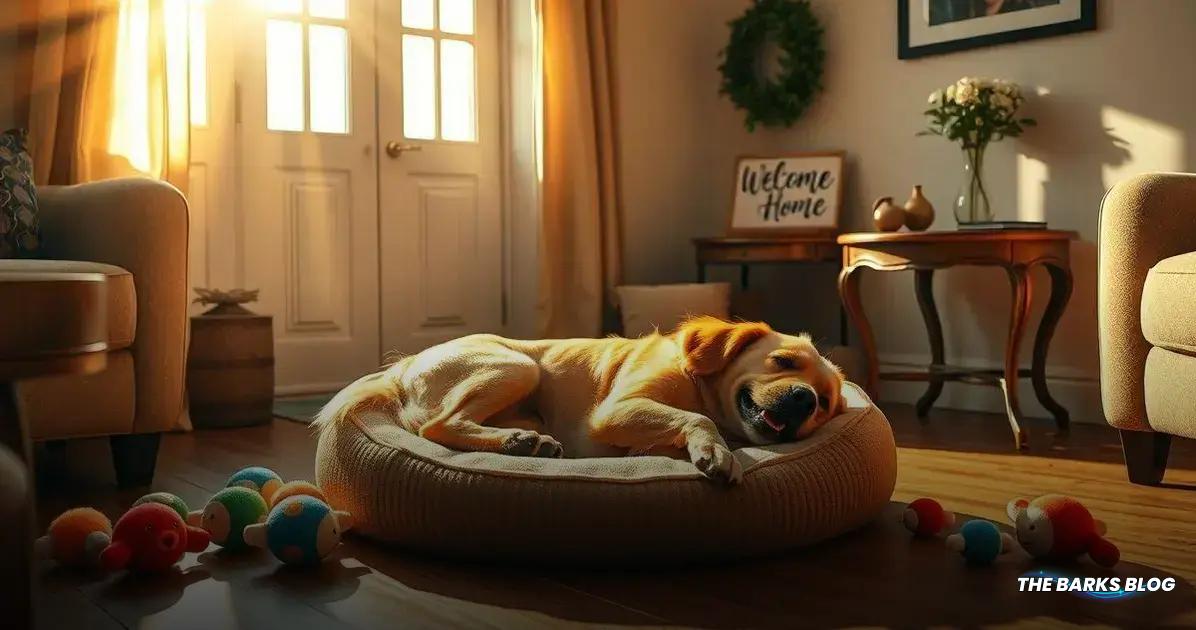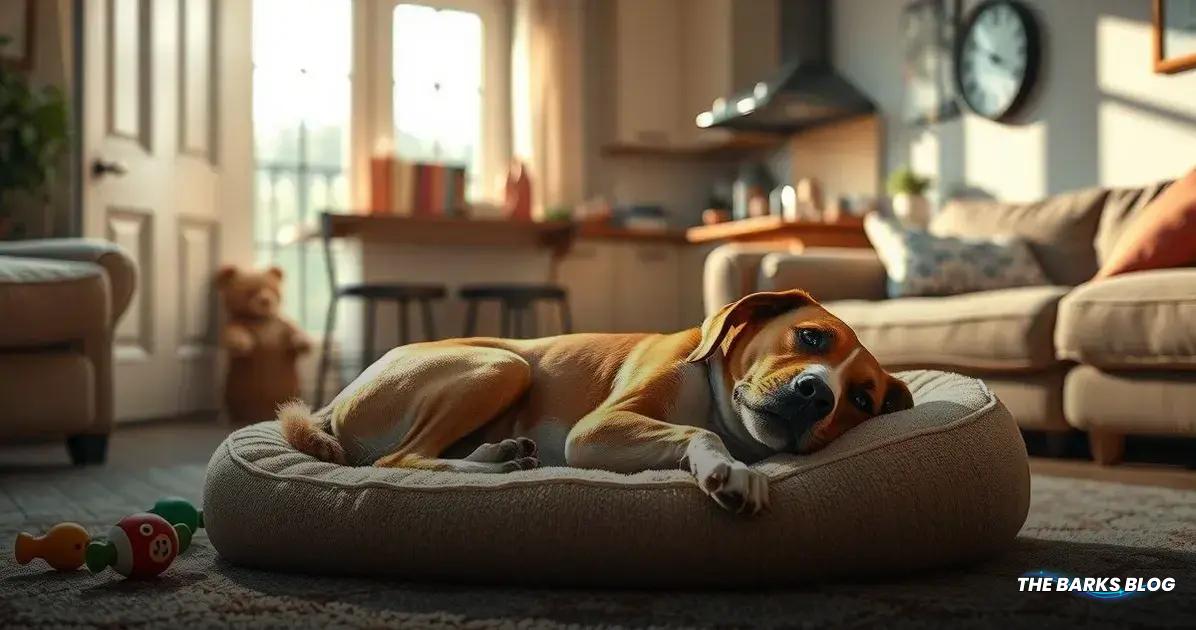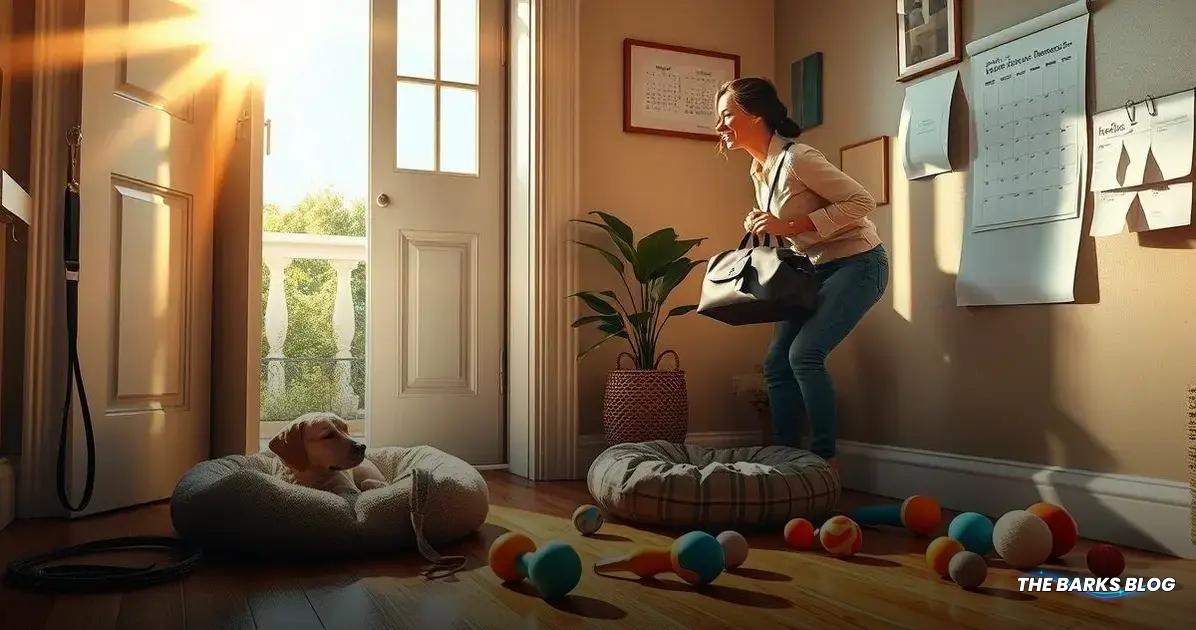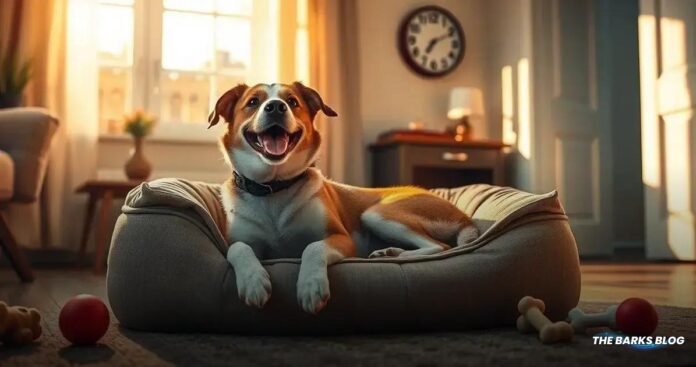To help your dog adjust to being home alone, create positive associations with alone time through engaging activities, gradually increasing the duration they are left alone. Establishing a consistent routine before and after your departure will provide structure and security for your dog. Consider crate training or providing a playmate to ensure your pet remains happy and comfortable while you are away.
While we love enjoying as much time as possible with our furry pals, responsibilities such as going to work or picking up groceries inevitably lead to some time apart…and that’s OK! Although you may feel sad or even a little guilty when you and your dog go your separate ways, it actually helps your furry friend acclimate and positively cope with alone time.
Whether you’re teaching a new pup to spend time on their own or helping an adult dog adjust to a new schedule, follow these tips for leaving your dog home alone.

Create Positive Associations with Alone Time
To begin the process of how to leave your dog home alone, offer your dog fun activities they can enjoy by themselves—even when you are home. This will show them alone time isn’t so bad! For example, if you are on the couch watching TV, give your furry friend a dog chew toy to keep them occupied and happy. Without constant attention and affection, your dog will learn how to feel content independently. Make sure to always supervise your dog when they are enjoying a chew toy.
Other ways to teach your pooch to grow comfortable with alone time is either crate training your dog or keeping them in an exercise pen. Try limiting your dog to one of these areas while you are home. To help ensure your dog forms a positive association with their crate or exercise pen, feed them meals or treats while they are in these spaces.
A dedicated spot comes in handy when your dog is home alone, especially because you likely want to limit access throughout the house when you’re gone for extended periods. Although you can start with leaving your dog in a crate while you are out, it should only be used as a temporary place for them to stay until you trust them to roam around in a larger, closed-off space.

Gradually Increase the Amount of Time Your Pup is Alone
Going from sticking by your furry friend’s side twenty-four seven to leaving your dog home alone for a full workday requires some preparation, so it’s best to start gradual and ease your pup into the transition.
If possible, practice leaving the house for a short period of time and then slowly increase the duration.
Initially, ask everyone in your family to exit the house (without the dog) for a few seconds before coming back in. Next time, increase to a few minutes. From there, build up to leaving your dog inside for longer periods at a time, such as when you do yard work or go for a walk in the neighborhood for 15 minutes. Increase the length you are gone by several minutes each time so your dog can slowly adjust to being home for extended periods.
Encourage your dog to settle down when you come back home and take them out to potty so they see this as an ordinary event. If your furry friend gets overly excited upon your return, avoid showing too much attention until they calm down. Once they are settled, reward them with a dog treat.

Establish a Routine for Before and After Leaving Home
Establishing a routine before and after you leave home will teach your dog what to expect and even encourage positive behaviors. For example, taking your dog to potty right before you head out will reduce their urge to “go” when you’re away. By the time you return, doing the same will reinforce it’s the appropriate time to go potty—and ideally reduce accidents in your home.
Aside from potty schedules, include interactive mental or physical stimulation in your routine before leaving for the day. This will tire your dog out, helping prevent them from making their own fun when you’re not home, such as chewing on your shoes. Try taking your pet for a walk, playing fetch with dog play toys, or practicing a new trick.
When you return, repeating these activities again will provide your pup the opportunity to explore their surroundings, exercise, and bond with you after a long day.
Conclusion
Once your dog grows used to being on their own, you both will have a much easier time going about your day.
Not only will you feel more comfortable while your dog is home alone, but your furry friend may even find the alone time relaxing!
By following these tips, you can help your dog develop the confidence to enjoy their independence while ensuring they remain happy and well-adjusted.
FAQ – Frequently Asked Questions about Leaving Your Dog Home Alone
How can I help my dog feel comfortable being alone?
Create positive associations with alone time by providing fun activities, like chew toys, and gradually increase the time they spend alone.
What should I do to prepare my dog for being home alone?
Establish a routine that includes potty breaks and interactive play before you leave to help your dog understand what to expect.
Is crate training necessary for leaving my dog alone?
Crate training can help your dog feel secure when left alone, but it should be used as a temporary solution until they adjust.
How long can I leave my dog alone?
It depends on your dog’s age and needs; puppies and senior dogs typically require more frequent breaks than adult dogs.
What if my dog shows signs of separation anxiety?
If your dog exhibits signs of separation anxiety, such as barking or destructive behavior, consider consulting a veterinarian or a certified dog trainer for help.
Can I leave my dog with a friend or in daycare?
Yes! Having a play buddy or taking your dog to daycare can provide social interaction and help them feel less lonely when you’re away.




